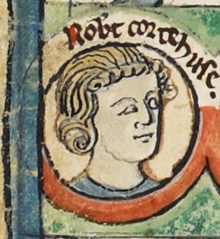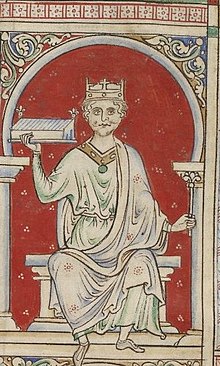The Final Days
Would you shed a tear
at the death of a ruler who had instilled great fear?
It is fitting that a ruler who instilled great fear and who inflicted such pain and indignities on others should suffer the same fate. He would spend his last days in the most appalling agony, express fear and after death his body would be treated in a most undignified fashion.
William’s later years were troubling ones. Matilda had died in 1083 and the very same year his son Robert had rebelled against him. In addition he had become grossly overweight. In fact his obesity was what eventually killed him but not in the manner one might think.
Agony
In July of 1087, the French King had joked that William was so fat that he resembled a pregnant woman. When William learned of the insult he flew into a terrible rage and vowed to extract revenge from his nominal overlord. On August 15 whilst in the process of destroying the French town of Mantes in Vexin his horse stumbled and his huge stomach was smashed against the pommel of his mount. He suffered serious injury to his intestines and in immense pain was carried to the Priory of St Gervaise in Rouen.
Fear
Realising he was close to death, William appeared to repent the savagery that he wrought. For probably the first time in his life he actually experienced fear. He is reported to have said:
‘I tremble when I reflect on the grievous sins which burden my conscience… now about to be summoned before the awful tribunal of God…I am stained with the rivers of blood that I have shed.’
The indignity of it all!
William died on the morning of September 59th aged 59. As soon as he was dead the nobles who were gathered around his bed speedily departed back to their estates because they feared that with the Conqueror dead disorder would break out. They feared for their properties.
With everyone gone, the servants stripped the Conqueror’s room of any of value including his bed linen. He was left lying almost naked on the floor of the bedchamber.
It was decided that he would be buried at the Abbeye aux Hommes in Caen
A modern image of the Abbeye aux Hommes in Caen.
The funeral would prove to be an extremely undignified affair. Firstly as the cortege marched through Caen an unwelcome distraction in the form of a house fire occurred. When the funeral procession arrived at the Abbey they were confronted by a man who said that he had not been paid for part of the land where the Abbey now stood. He demanded immediate payment and the Conqueror’s body had to be laid down while the authorities which may have included William’s son, Henry checked if the man was telling the truth.
Oh! How ghastly!
It transpired that he was, and then at last the body proceeded into the church.
‘Oh thank God, now we can finally bury him with dignity!
Er….. well!
The chapel was filled with people, perhaps they had made the effort out of a feeling of sincere grief. However the funerals of those regarded as having been successful are normally well attended while those of people deemed unsuccessful tend to be less so.
William had gained an enormous amount of weight since the construction of the tomb, and it proved exceedingly difficult to fit the body in. As they did so, William’s bloated bowels suddenly burst and the smell was horrendous. People who one second, were on their knees praying solemnly for William’s soul, were the next leaping out of the pews running for the door liked scorched cats.
The priests concluded the funeral service at break neck speed.

William’s tomb.








